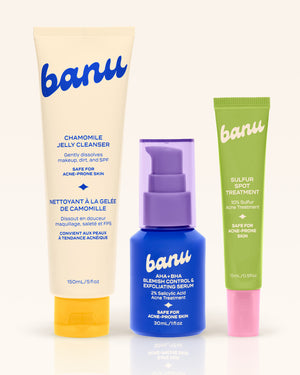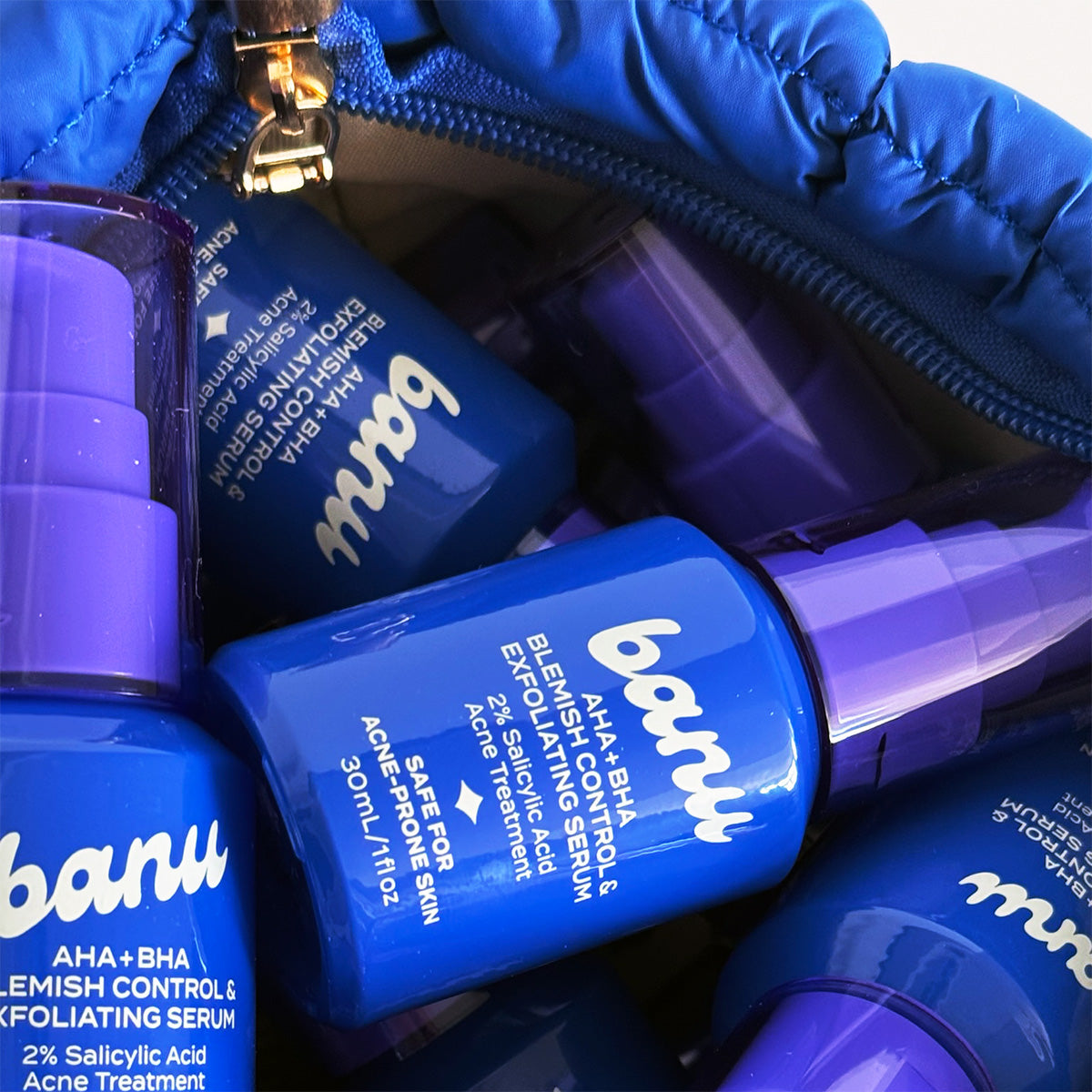How to Tell If You Have Fungal Acne—and What to Do About It
2 June, 2025

by Roz Samimi
If your most recent breakout consists of itchy bumps that are small or rash-like, it might not be a typical breakout at all. You could be dealing with fungal acne.
Often mistaken for common acne, fungal folliculitis (also called pityrosporum—a type of folliculitis caused by yeast) is caused by a different triggers and requires a different approach. This guide breaks down how to identify it, what causes it, and the treatment options available.
What Is Fungal Acne?
Fungal acne is not technically acne—it’s a fungal infection in the hair follicles, often triggered by heat, humidity, or certain skincare products. Unlike acne vulgaris, which is caused by bacteria and oil buildup, fungal acne is caused by the overgrowth of Malassezia yeast on the skin.
How to tell the difference:
- Traditional acne: Caused by clogged pores, oil, bacteria, and inflammation
-
Fungal acne: Caused by yeast buildup within the hair follicle
Recognizing this specific type of acne can help you choose products that support your skin—not work against it. Tip: All banu skincare is free from fungal-acne-triggering ingredients.
What Does Fungal Acne Look Like?
If you’re trying to figure out what’s going on with your skin, these signs might point to a fungal acne infection:
- Small, red, itchy uniform bumps (papules)
- Can develop into small pustules with white or yellow centers
- Usually not painful like cystic acne
- Commonly appears on the forehead, chest, upper back, and shoulders
What Causes Fungal Acne?
Internal and external triggers can throw off your skin’s natural balance and lead to yeast overgrowth.
Internal triggers:
- Overuse of antibiotics
- Hormonal shifts or a weakened immune system
-
Diets high in sugar or refined carbs
External triggers:
- Occlusive skincare or makeup, especially those with oils or fatty acids
- Excessive sweating
- Wearing tight clothing that can trap moisture and heat
-
High heat and humid climates
Good to Know: That’s why it’s so important to use skincare that’s safe for fungal acne—like banu’s formulas—which are intentionally made without oils or esters that can feed Malassezia yeast.
How to Treat Fungal Acne
Here’s how to calm fungal acne breakouts, make smart lifestyle changes, and reduce the chances of future flare-ups.
1. Use Fungal Acne-Safe Skincare
Many popular skincare products contain ingredients that can trigger or worsen fungal acne. Steer clear of:
- Lauric acid (found in coconut oil)
- Oleic, stearic, linoleic, and palmitic acids
-
Ferment extracts or esters
Instead, choose formulas that are:
- Free of fungal-feeding ingredients
- Designed to support the skin barrier without feeding yeast
2. Keep Skin Clean and Dry
Yeast growth increases in warm, moist environments. To minimize fungal acne:
- Shower after workouts or sweating, especially if the affected area includes your chest, back, or shoulders.
- Wear loose, breathable clothing.
-
Avoid leaving thick lotions, sunscreens, or makeup on overnight.
3. Use the Right Actives
If you're treating fungal acne at home, traditional acne treatments won’t work. Instead, look for over-the-counter treatments with active ingredients like the following:
- Sulfur: Naturally antifungal and soothing to inflamed skin
- Zinc pyrithione: Found in antifungal shampoo (anti-dandruff shampoo) and works well as a gentle cleanser or body wash for fungal acne
-
Tea tree oil: Has natural antifungal properties (use with care and dilution)
4. Talk to a Dermatologist
If over-the-counter efforts aren’t clearing things up, it’s time to bring in expert support. A dermatologist may recommend:
- Topical antifungals (like ketoconazole or ciclopirox)
- Oral antifungals (like fluconazole or itraconazole) for more persistent cases
- A full skin assessment to rule out other conditions or coexisting acne types
If you’re also using acne-safe products like banu’s, these treatments can work even better, with less risk of irritation or conflicting ingredients.
The Takeaway: Know What You’re Dealing With
Fungal acne infections can be frustrating and easy to misdiagnose. If you’re unsure, see a board-certified dermatologist for an accurate diagnosis and the most appropriate course of action—topical treatments or prescription medications—so you can focus on healing, not second-guessing your skin concerns.

Author
Roz Samimi
Roz Samimi is the founder of banu skin and a passionate voice on acne care, writing about everything from effective treatments to common myths.












































